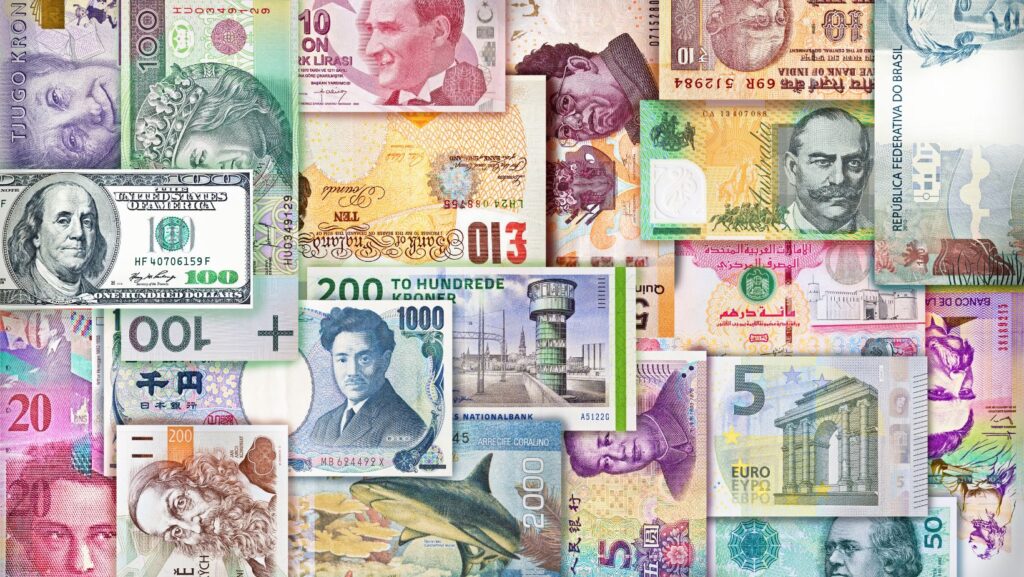
Regarding currency strength, the value of a nation’s currency is a major sign of its economic health, market stability, and worldwide influence. While weaker currencies may indicate problems like inflation, fiscal deficits, or political instability, a stronger currency usually indicates strong economic fundamentals.
Figuring out which currencies rank among the leading 10 strongest currency in the world provides valuable insight into global economic dynamics. We will also look at the elements supporting their power and how they influence investments and international trade.
Swiss Franc
Often regarded as one of the safest currencies in the world, the Swiss Franc, denoted by CHF, Switzerland’s consistent political climate, robust financial industry, and sensible fiscal policies help to support the Swiss Franc. The nation’s low inflation rate and strong banking system draw foreign investors looking for stability.
Economic analysis:
- Safe-Haven Status: Long considered a safe-haven currency, the Swiss Franc usually does well during periods of worldwide economic turmoil.
- Strong Financial Sector: Switzerland is home to some of the largest banks in the world, and its financial services sector continues to be a major engine of the economy.
- Low Inflation: Switzerland keeps low inflation rates, which helps to draw investors seeking long-term stability to its money.
Euro (EUR)
Used by 19 of the 27 European Union member countries, the Euro is the second-largest and among the most often traded currencies in the world. The combined economy of the Eurozone is among the largest in the world, the Euro shows this economic might. The strength of the Euro, though, may change based on the economic situation of single member countries.
Economic insights:
- The EU’s Economic Power: One of the greatest economies in the world, the Eurozone drives demand for the Euro in worldwide trade.
- The European Central Bank (ECB) sets monetary policy for the Eurozone, therefore guaranteeing price stability and economic growth among member countries.
- Volatility: Although the Euro is generally strong, political and economic crises inside individual EU member states can influence its value.
Pound Sterling (GBP)
Often called the “Pound Sterling,” the British Pound is among the oldest and most stable currencies still in use.

The British Pound carries great weight in the worldwide market given the United Kingdom’s well-developed economy and its role as a global financial center.
Economic insights:
- Financial Center: London is one of the major worldwide financial centers, hence strengthening the Pound and making it a commonly used currency for global commerce.
- Political Stability: The Pound stays strong despite political uncertainty like Brexit as the UK has built economic infrastructure.
- Global Trade: Particularly for commodities like oil and gold, global trade transactions often employ the Pound.
The Dollar of the United States
A major force in worldwide banking, the US Dollar (USD) is the most often used reserve currency in the world. The foreign exchange market is mostly dominated by the USD, which is also utilized for most international transactions. The economic size and power of the United States, as well as the Federal Reserve’s monetary policies, mostly determine the strength of the dollar.
Economic insights:
- Global Reserve Currency: Being the world’s main reserve currency, the USD is essential for central bank reserves, investments, and international commerce.
- The strength of the USD is directly influenced by the Federal Reserve’s policies including interest rate choices and quantitative easing.
- The scale of the US economy, technological developments, and consumer market support the USD’s supremacy in the worldwide financial system.
Singapore Dollar (SGD)
Singapore’s very developed and export-oriented economy gives the Singapore Dollar (SGD) one of the strongest currencies in Asia. The strength of the SGD is enhanced by the country’s political stability, low tax rates, and strategic location as a global commerce hub.
Economic analysis:
- World Trade Center: A major financial and trading centre in Asia, Singapore sees a notable amount of foreign direct investment (FDI) running through the nation.
- The strength of the SGD is supported by the country’s consistent political stability and effective government programs.
- Low Inflation: Singapore’s persistent low inflation makes the SGD appealing to investors looking for a dependable store of value.
Norwegian Krone (NOK)
The Norwegian Krone (NOK) gains from the country’s great natural resources, especially oil and gas. Substantial oil exports help Norway to be one of the richest countries in the world. Norway’s solid economic foundations and sensible budgetary policies also help to support the Krone’s strength.
Economic insights:
- Oil Exports: One of Europe’s largest oil exporters, Norway’s oil prices have a major impact on the Krone’s strength.
- Norway’s stable economy and currency strength are supported by its large welfare state and low debt levels.
- Norway’s sovereign wealth fund, which invests the country’s oil income, helps to offset economic swings and sustains the Krone’s value.
Japanese Yen (JPY )
One of the top ten strongest currencies in the world, the Japanese Yen (JPY) is the most traded currency in Asia.

Driven by its advanced industrial sector, technological innovation, and strong worldwide trade linkages, Japan’s economic strength makes the Yen a major player in the world market.
Economic analysis:
- One of the top economies in the world, Japan boasts a strong industrial base including significant global companies such Toyota, Sony, and Panasonic.
- The value of the Yen, which usually is a safe-haven currency during worldwide financial instability, is affected by the low-interest-rate policy and quantitative easing initiatives of the Bank of Japan.
- Japan’s major contribution to world trade, especially in electronics and cars, helps to drive the Yen.
Kuwaiti Dinar (KWD)
In terms of exchange rate, the Kuwaiti Dinar (KWD) is the most valued currency in the world. Kuwait’s riches come mostly from its huge oil reserves, which help to make it a very stable currency. The KWD’s strength is enhanced by the government’s strategic infrastructure investment and economic policies.
Economic insights:
- Kuwait is one of the richest nations in the world because of its significant oil exports.
- The country’s low debt levels and sensible fiscal management increase investor trust in the KWD.
- Kuwait’s consistent economy and great quality of life help to support the KWD.
Bahraini Dinar (BHD)
Another Middle Eastern currency noted for its strength is the Bahraini Dinar (BHD). Bahrain’s strategic location as a regional banking center and its well-established financial sector help to stabilize the currency.
Economic analysis:
- Although Bahrain’s economy has historically been oil-dependent, the nation has expanded into manufacturing, banking, and finance.
- Bahrain draws foreign capital and commerce by being a financial centre for the Middle East.
- The Bahraini government keeps a strong peg to the US Dollar, therefore stabilizing the BHD’s value.
Cayman Islands Dollar (KYD)
The Cayman Islands, a British Overseas Territory famed for its financial services sector, uses the Cayman Islands Dollar (KYD) as its currency. Its strength is helped by the islands’ role as an offshore financial center, the currency is tied to the US Dollar.
Economic analysis:
- Driven by the KYD, the Cayman Islands are a world leader in offshore banking and finance.
- Stable Peg to USD: International investors benefit from the stability and lower exchange rate risk the KYD derives from its peg to the US Dollar.
- Many foreign banks and investment companies help the local economy and the worth of the KYD.
The Bottom Line
The strength of a nation’s currency offers insightful analysis of its economic situation, market stability, and worldwide impact. Ranging from the Swiss Franc to the Cayman Islands Dollar, the top 10 strongest currencies in the world reflect a mix of good fiscal policies, robust financial sectors, and savvy worldwide trade placement. Understanding the elements that support the strength of these currencies will help traders and investors to have a clearer view of world economic dynamics and enable them to make more educated choices in the financial markets.










